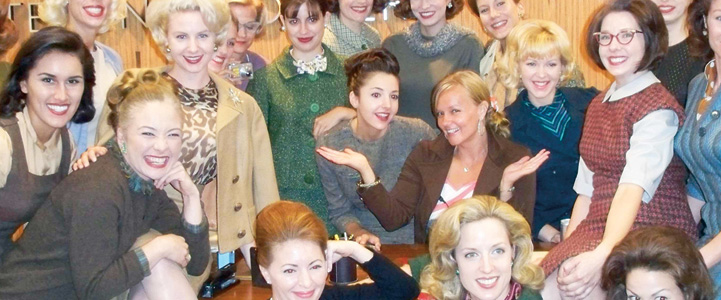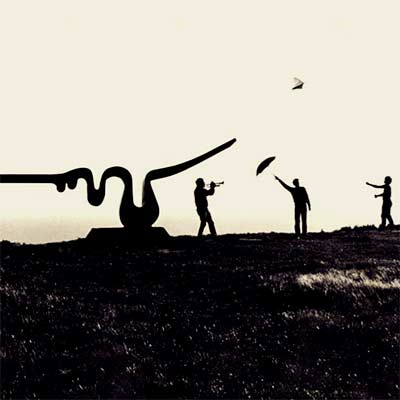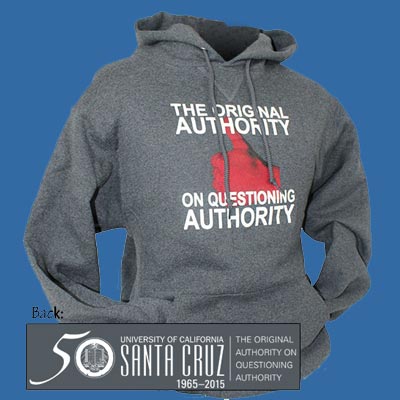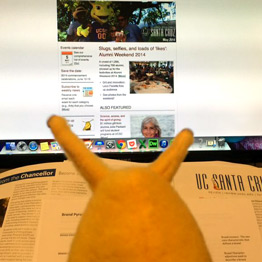
This article originally appeared in the fall 2010 issue of UC Santa Cruz Review magazine.
Tiffany White (Kresge ‘03, psychology) has had a passion for clothing ever since she wore a vintage gown from the early ’70s to her senior prom. Even then she was a tinkerer, redesigning the dress by lowering the garment’s back and re-creating its top before wearing it.
Three years later, when she traveled the world during her junior year at UC Santa Cruz with Semester at Sea, a shipboard program for global study abroad,clothing became much more than a diversionary pastime.
“In each country I just found the clothes to be such an amazing expression of people, of time and culture and place, not just fashion or trendiness,” said White, 29. “From an outsider’s perspective, it’s storytelling. I had an ‘a ha’ moment with a beautiful mix of psychology, which is analyzing character, and clothing, which I’ve always had a passion for.”
White is now a costumer for one of the hottest shows on television—AMC’s Mad Men, set in 1960s New York, starting at the fictional Sterling Cooper advertising agency on Madison Avenue and later at the fledgling firm of Sterling Cooper Draper Pryce.
The show centers on Don Draper, played by Jon Hamm, creative director at Sterling Cooper and a founding partner at Sterling Cooper Draper Pryce. Through the characters’ experiences, both in and out of the office, the show depicts the changing social values, fashions, and politics of 1960s America.
In its fourth season, which began in July, the show is set in 1965—the year UC Santa Cruz was founded. The country was on the brink of enormous social change.
“So much was changing,” said Los Angeles Times TV critic Mary McNamara. She referenced the deepening Vietnam War, “hippie stuff,” and the sexual revolution, “but as much as those changed things, it’s almost the more subtle cultural shifts that make us realize when we see the ‘before’ how different the ‘after’ is,” she said.
For example, the sexism, racism, classism, cigarette smoking, emotional repression, and rampant boozing in the office portrayed on the show are shocking to today’s audiences.
“It’s pretty astonishing that we’ve gone from a nation where you had a three-martini lunch, to where if you do that now people are going to be leaving AA literature on your desk,” McNamara said.
Background is her forte
White outfits the female background characters, or, in the lingo, “BG women.” Any non-speaking female character in the background—in the office, a restaurant, bar, doctor’s office, or hotel lobby—is her charge.
On fitting days, “each girl comes in and I fit her top to bottom with stockings, pantyhose, panties, girdles, bras, everything,” White said.
That attention to detail, down to the undergarments, helps transport television viewers through time, said Brandin Barón, associate professor in theater arts at UCSC, who specializes in costume design.
“As we become more casual in society, women are not used to wearing heavy foundation garments such as they do on Mad Men because it’s not part of our lifestyle,” Barón said.
White then gives Mad Men costume designer Janie Bryant two outfit options for each character.
“We treat all the backgrounds as if they’re principals,” said White. “I try to make characters out of people. I look at her and think, ‘Is she a mom? A grandmother? Does she have a lot of money?’ I think that’s a reason people do respond to the show, because they notice people feel really real in a scene and that they have a story.”
Buzz generator
Mad Men has received critical acclaim, particularly for its historical authenticity and visual style, and has won 13 Emmys and 4 Golden Globes. The show is meticulously researched, with almost maniacal attention to detail and historical accuracy in every frame—from the bottle openers to the vernacular to the lamp on the side table in Don Draper’s bachelor pad.
“I credit [Mad Men creator] Matthew Weiner and AMC for not scrimping on sets and costume and realizing that God is in the details,” said McNamara.
Every detail serves a narrative function. The main characters’ clothing—tailored suits and pressed white shirts for the men, girdles and waist-conscious dresses and skirts for the women—is polished, sleek, fitted and perfect, serving as a contrast to the messiness of their lives and psyches.
Amazingly, almost all of the clothing on the show is actually from the 1960s, even the shoes, White said. There are a few exceptions, such as pantyhose and costumes designed specially by Bryant.
Viewers have noticed. The buzz around the show is almost a roar, and media and cross-marketing blitzes are everywhere— the September 16 issue of Rolling Stone magazine featured a sexy shot of four main characters on the cover and pronounced Mad Men “the best show on TV,” while a large clothing retailer teamed with the show to offer a casting call that ended in September. As of early September, there were more than 4,500 entries. Vogue, Cosmopolitan, Marie Claire, and Women’s Wear Daily have published Mad Men fashion articles. Bryant is coming out with her own ’60s inspired line called Mod. There are even Mad Men Barbie dolls.
When the pilot episode aired in 2007, “we were all struck with the beauty of it—the cinematography, the costumes, the set. It was evocative of a dreamlike interpretation of the ’50s and ’60s, where men looked like men and women looked like women,” McNamara said. “I think there’s an appreciation of style. We want to look like that even if we don’t want to wear it.”
For White, working with ’60s clothing has provided a unique perspective on an era that ended long before she was born.
“In school we always thought of the ’60s as a time of cultural revolution, but from where we’re working you can see why people started to go that way,” White said. “Just dealing in clothing, it’s so strict, and there are so many etiquette rules—when to wear gloves, when to wear a hat—I can see why people wanted to break free of that.”
Nowadays, it’s easy to glamorize the dressy style of the time, she added, “but if you had to wear a girdle every day it would not be so glamorous and you’d be ready to burn it.”
Road to costuming
White’s journey to costume work for major television productions—she also works on HBO’s True Blood—is a story about persistence and a little bit of “right time, right place.”
After Semester at Sea, she took some costume-design-related classes at UCSC, as well as figure drawing and sewing.
At UCSC, she also learned to take on the world with a laid-back attitude.
“You can look at the other side of things and not be judgmental,” said White, who lives in Los Angeles with her husband, James Stanton (College Nine ’04, community studies), a freelance TV and film editor. UCSC is something of a family affair: Stanton’s mother, Marti Stanton, works at UCSC as manager of the American studies department.
After college, White got a degree in fashion design from the Fashion Institute of Design & Merchandising in Los Angeles. She then landed a job as a shopper for the entertainment division at Disneyland.
She had made contact with Bryant earlier, and made sure to keep in touch with an e-mail every few months. Shortly after White left Disneyland, she got a call from Bryant asking if she’d like to join her in a new show on AMC.
Her days for Mad Men are filled with tasks including “pulling” vintage clothing from Los Angeles-area costume houses, where she’ll rent two or three racks’ worth of period clothing for a scene.
Then she fits the actors and works on set to make sure the costumes are “100 percent correct on every single person every single time”—snaps are snapped, hook-and-eyes are fastened, buttons are in the proper place, bows are tied.
When she’s not pulling, fitting, or on set, she’s searching through magazines from the 1960s such as Good Housekeeping and Vogue, as well as Sears and Montgomery Ward catalogs. She also scans web sites such as visual media provider Corbis Images and watches movies from the time period.
“We do research and a lot of it, all the time,” she said. “You start to see different silhouettes—no matter the print or the pattern, you see where the seam lines are, and I can recognize it’s the proper silhouette.”
In 1965, the civil rights movement and the feminist movement were making huge inroads. Record numbers of people who had attained a college education courtesy of the post-World War II GI Bill were working to change American society.
Mad Men offers a measuring stick for how far we’ve come, said critic McNamara.
By our current thinking, “everyone deserves an equal chance, smoking is bad for you, you need to be able to talk about your feelings, and you need to find some kind of inner happiness—no matter how good you look in a suit.”
But the show roots viewers in a time period before these beliefs had caught on.
“Mad Men has done a good job of presenting a fascinating and beautifully put together ‘before’ picture,” McNamara said, “and that’s more effective than any kind of chronicling of the actual change.”



